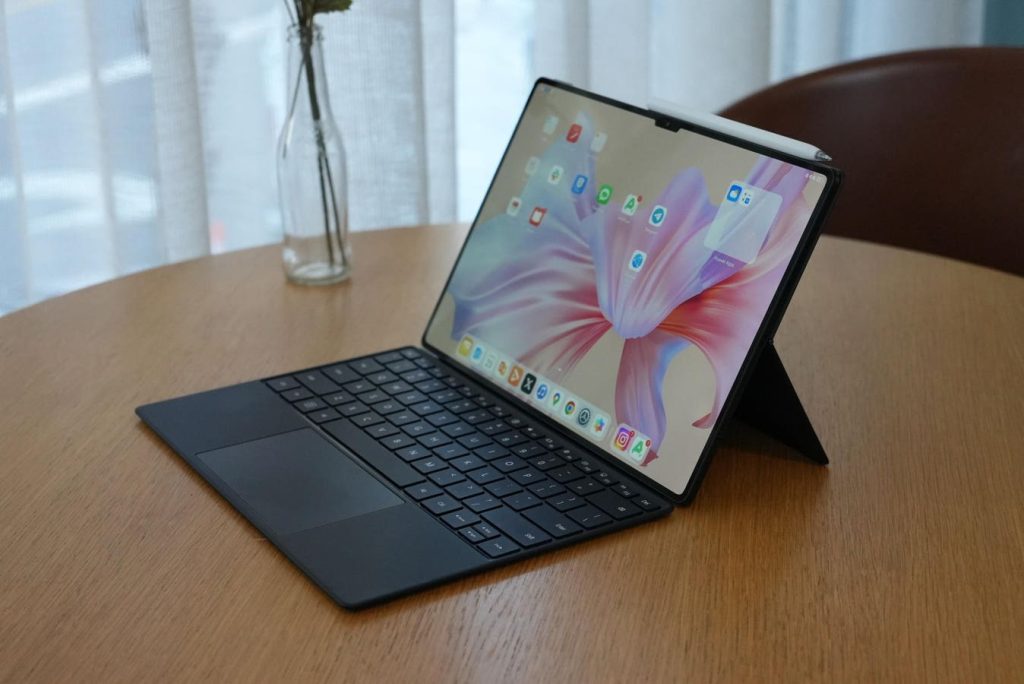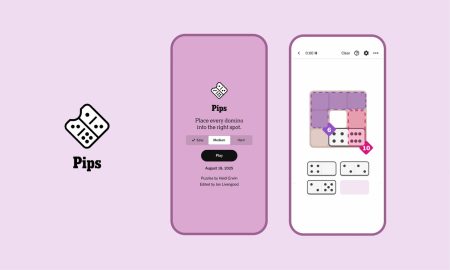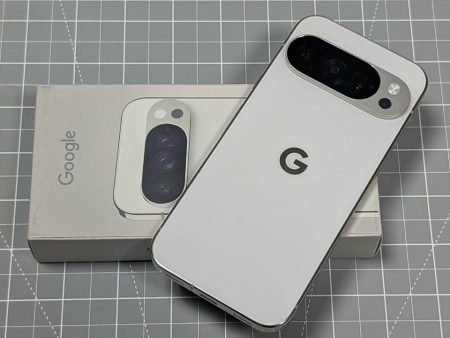Huawei has always made solid, functional, “jack of all trades, master of none” type tablets, but in the past year it’s become much more adventurous and inventive. A few months ago, the company released a tablet with a matte color screen that can simulate the effects of being an e-ink screen. And now comes the MatePad Pro 13.2, a larger-than-usual tablet that’s so, so thin.
The MatePad Pro 13.2’s 5.5mm is so thin, in fact, that the stylus noticeably spills over the frame due to its wider girth.
That frame, despite the Pro moniker, is made of plastic. A decision made to ensure the tablet remains light. And indeed, the MatePad Pro 13.2’s 1.27lbs (580g) is lighter than the 13-inch iPad Pro’s 1.52lbs (682g) or the 1.62lbs (172g) of Samsung’s Tab S9 Ultra.
But that’s not all, Huawei’s keyboard folio case, which like the stylus comes included the package, is also impressively light and thin, giving the entire MatePad Pro package a weight of just roughly 2.3lbs, which is significantly lighter than the iPad Pro’s similar package, which weighs about 3.2lbs. That extra pound matters for me, because I often keep a tablet in my bag when I go out at all times in case I need to do sudden work.
So while the plastic frame (and fiber glass backside) doesn’t give the MatePad Pro the same sturdiness or premium craftmanship of an all-aluminum iPad Pro, it’s much more comfortable to hold and carry around.
There’s one more thing Huawei did here, that almost no one else is doing, that drastically improves quality of life. The keyboard case is actually a two-part case that can split, with the back flap with kickstand separating from the actual keyboard base. The keyboard also connects to the tablet wirelessly over Bluetooth instead of pogo pins, which means I can prop the MatePad Pro 13.2 on a higher surface and still use the keyboard, like the picture below.
This improves ergonomics significantly, as I can keep my head looking straight ahead at coffee shops without needing to crane my neck down. Avoiding the dreaded “tech neck” is something I have to take more seriously as I approach middle age, and I’m glad this tablet allows me to do so.
The rest of the hardware range from high end to surprisingly average. The display is special: a 13.2-inch OLED screen using flexible OLED panels (one of the very first tablets to do so). The flexibility allows Huawei to slim the bezels to the thinnest I’ve ever seen in a tablet.
The chip powering the tablet is the Kirin 9000s. Technically speaking, its 7nm processing node means it’s not as advanced as the latest Qualcomm silicon, but this chip is noteworthy because it’s that same silicon Huawei self-developed which had prompted the U.S. government to seek the full details of the chip technology last fall.
I’ll leave the politics out of this review and just talk performance: it’s fine. The silicon isn’t as efficient as the newest iPad Pro chip, and I definitely see slower rendering speeds when exporting 4K video footage, but otherwise for basic tablet use the silicon is fine.
And yes, that U.S.-imposed sanction on Google mobile services applies here, so you won’t be able to run core Google apps like YouTube or Gmail on this tablet. But it doesn’t matter so much on a tablet, because you can just use the web browser version of YouTube or Gmail, which is what most people on a laptop do anyway. Needing an actual “app” for the service is a very handheld portable device need.
Still, you do need some technical knowhow to install some widely used apps like Instagram because there is no Google app store for you to easily download them. But none of this is new to Huawei products, and anyone considering buying a Huawei product in 2024 surely knows about the limitations.
I can say that I can use the tablet for work perfectly fine. I access Gmail via Microsoft Outlook (which is available on the Huawei app store). Other apps I use, like Spotify, Instagram and Twitter, all work. Even Google Maps works, you just can’t sign into your Google account. But I can definitely look up nearby coffee shops and even get directions there.
Outside of the Google ecosystem, Huawei’s own ecosystem is very mature and easy to use. If you have other Huawei products, the MatePad Pro 13.2 plays very nice with them. You can easily pair a Huawei phone to the tablet, and get a virtual phone screen on the tablet. You can drag and drop files from your phone to the tablet, or vice versa. Huawei’s ecosystem cohesiveness is actually second only to Apple, in my opinion.
The MatePad Pro is great as a media consumption machine, with six stereo speakers that pump out loud and full audio. The stylus, known as M Pencil, also works well, with four digit pressure sensitivity and the ability to take handwriting input, meaning it can recognize handwritten text and convert to actual digital text.
The slightly larger than usual notch is to house an ultra-wide selfie camera and a 3D ToF sensor, which is used for 3D face scanning. The tablet does not have a fingerprint sensor, so you need to use either passcode or face recognition to log in.
The 10,100 mAh battery can power the tablet a full eight-hour workday, and finish with at least 25% juice to spare, and it also charges very fast at 88W with the included charger.
Overall, the Huawei MatePad Pro 13.2 is a sleek large screen tablet that is ideal for those of us who do a lot of writing work on the go. I mostly love using it because it’s so light, making it easy for me to carry all day, and I can also prop the tablet higher to save my posture from the dreaded laptop neck syndrome.
At €999 in Europe and roughly HK$7,000 in Hong Kong, the MatePad Pro 13.2 is priced high enough that I don’t think it’ll convince many casual users to make the jump from the iPad. But those of us who know there’s often better value and more functional alternatives other than Apple would find plenty to like with the MatePad Pro 13.2.
Read the full article here









